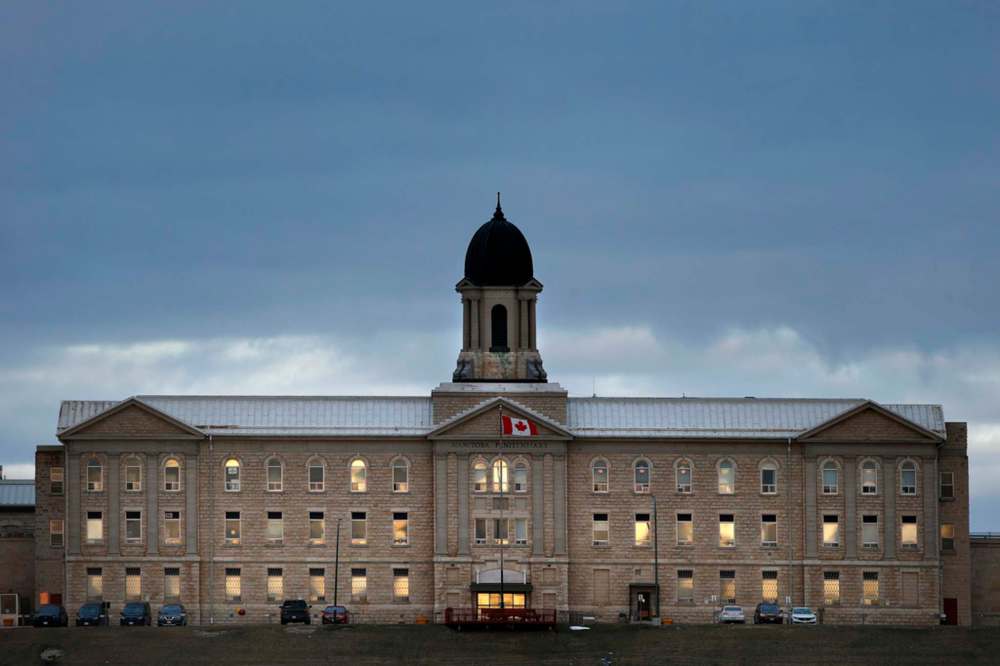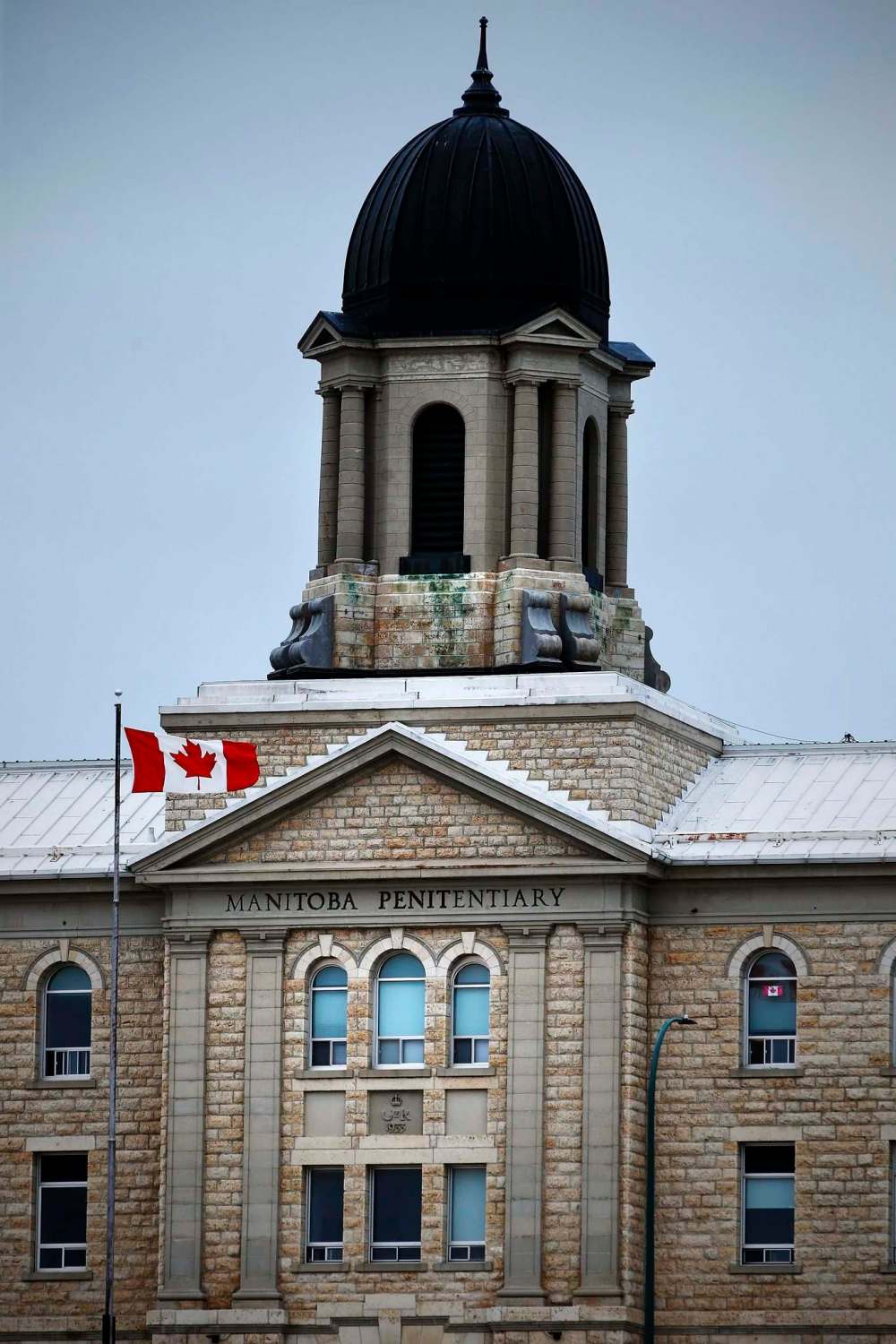Pride and precipice The warden at Canada's deadliest federal prison says safety is his 'No. 1 priority,' but guards and inmates inside Stony Mountain Institution, along with criminology experts, point to 19th-century infrastructure, unrelenting gang violence and a shocking suicide rate as reasons it should close
Read this article for free:
or
Already have an account? Log in here »
To continue reading, please subscribe:
Monthly Digital Subscription
$0 for the first 4 weeks*
- Enjoy unlimited reading on winnipegfreepress.com
- Read the E-Edition, our digital replica newspaper
- Access News Break, our award-winning app
- Play interactive puzzles
*No charge for 4 weeks then price increases to the regular rate of $19.00 plus GST every four weeks. Offer available to new and qualified returning subscribers only. Cancel any time.
Monthly Digital Subscription
$4.75/week*
- Enjoy unlimited reading on winnipegfreepress.com
- Read the E-Edition, our digital replica newspaper
- Access News Break, our award-winning app
- Play interactive puzzles
*Billed as $19 plus GST every four weeks. Cancel any time.
To continue reading, please subscribe:
Add Free Press access to your Brandon Sun subscription for only an additional
$1 for the first 4 weeks*
*Your next subscription payment will increase by $1.00 and you will be charged $16.99 plus GST for four weeks. After four weeks, your payment will increase to $23.99 plus GST every four weeks.
Read unlimited articles for free today:
or
Already have an account? Log in here »
Hey there, time traveller!
This article was published 28/05/2021 (1655 days ago), so information in it may no longer be current.
When construction of Stony Mountain Institution — then known as Manitoba Penitentiary — was completed in 1877, Queen Victoria was the reigning monarch of the British Empire.
Canadian Confederation had taken place just a decade prior — if the country had been a person, it would have been unable to legally drive, let alone vote or drink.
And while Queen Victoria died 1901, and the British Empire crumbled in the post-Second World War era, Stony Mountain Institution remains. Prisoners have now been locked up behind its bars north of Winnipeg during three separate centuries.
In recent years, there has been no shortage of critics — from academics and advocates to political figures and former prisoners — who have called for the aging facility to be shut down once and for all.

In the wake of the shuttering of Kingston Penitentiary in 2013 after 178 years, Stony Mountain took on the dubious distinction of being the oldest active federal prison in the country.
And if you ask Robert Bonnefoy who, on May 19 celebrated his 12th anniversary of being named Stony Mountain’s warden, he’ll say he hopes the notorious prison remains open for decades to come.
If the precedent set by Kingston Penitentiary holds, he may get his wish.
“Stony Mountain Institution is the oldest facility in Canada, but the work that goes on in there is absolutely cutting-edge,” Bonnefoy told the Free Press over the phone.
“It’s vital that it does stay open.”
Those comments came during a recent exclusive and wide-ranging interview in response to the Free Press investigation, Life and Death Behind Bars, which found that Stony Mountain is not just the oldest active federal prison in Canada, but also the deadliest.
In the past 16 months, at least 13 inmates have died at Stony Mountain, including five deaths during the first 93 days of 2021 alone; in the past four years, the Correctional Service of Canada has reported the deaths of at least 23 inmates.
The interview was out of the ordinary for CSC, a federal agency that has long been tight-lipped, preferring to communicate with the public through written statements and press releases.
Stony Mountain Institution is Canada's oldest federal penitentiary, but also the country's deadliest

Posted:
IT HAS BEEN 59 years since the Canadian state last slipped a noose around the neck of a prisoner, and more than four decades since the gallows were formally abolished in this country, yet death continues to lurk behind the bars of Stony Mountain Institution north of Winnipeg.
“The biggest thing is safety. We want to ensure that we have a safe institution for all our staff, all our offenders. That allows us to provide an environment that is conducive to rehabilitation and reintegration,” Bonnefoy said.
“That would be my No. 1 priority…. There is no more important job than the care and custody of other human beings.”
But if safety is the main concern for Stony Mountain officials, then the institution is failing, said Justin Piche, a criminologist and associate professor at the University of Ottawa, whose research focuses on Canadian imprisonment.
“Why have so many people died at Stony Mountain then?” Piche said.
“That would be my terse response.”
Whether by gang violence, suicide or “apparent natural causes” — the vague term CSC uses in press releases for medical-related deaths — bodies having been piling up at Stony Mountain in recent years with disturbing regularity.
Despite the statistics, Bonnefoy is emphatic that prison officials do their best to separate rival gang members — referred to as “incompatibles” — from one another, while also fighting hard to roll back the rising tide of inmate suicide.
“We don’t house incompatibles together. A site like Stony Mountain Institution has a certain security threat group or gang profile. If we can’t safely integrate an individual, or individuals, into that profile, we won’t house them,” Bonnefoy said.
But according to multiple inside sources — including both inmates and guards — while that may be official policy, it simply isn’t the front-line, day-to-day reality at the prison.
There are at least seven major gangs at Stony Mountain, with dozens of smaller outfits that pass through in various numbers.
Major gangs include multiple Hells Angels support clubs, such as the Zig Zag Crew and the Redlined. There is also the Indian Posse, the Manitoba Warriors, the Gangster Crips and the B-Side.
Gangs with a smaller presence include the African Mafia, TFN, Native Syndicate, United Nations and the Terror Squad, among others. At times, there may be only a few members of these gangs inside the prison, or even none at all.
The institution tracks the gangs through security intelligence efforts and by reviewing incident reports — colour-coding them as green (compatible), yellow (uncertain) and red (incompatible). Those efforts result in a general guide for placing inmates in particular units.
Aside from incompatibility between gangs, there are also personal beefs between inmates that must be considered, which further restricts staff when deciding where a prisoner can be safely housed.
Hard time in hell: Inside Stony

Posted:
Gangs are in control, inmates are armed and the threat of violence is omnipresent at Stony Mountain Institution.
The situation results in a virtual house of cards at Stony Mountain, where one wrong move can have cascading effects that result in violence rippling out into various areas of the prison.
“(The warden) may think we don’t house incompatibles together, but that’s just not the way it works. There are a lot of gangs that are incompatible with each other and they always end up in the same areas,” one correctional officer said.
“If we don’t house incompatibles together, then what is the answer for all of the violence?…. He’s out of touch. I would like him to come in on an evening shift, come spend some time in the prison (outside)… Monday to Friday, eight-to-five.”
As an example, the guard pointed to a recent episode of violence after an individual was transferred from the general population into a “structured intervention unit.”
In 2019, the federal government abolished the long-term housing of inmates in solitary confinement — which has been classified as torture by the United Nations — and replaced it with the new SIUs.
But independent research from academics such as Anthony Doob, a University of Toronto criminologist, suggest the change was mostly a matter of semantics, and in many cases business has carried on as usual.
“They throw him on the range without doing their proper homework. And within no time at all, the guy gets attacked and stabbed by gang members who are living on this structured intervention unit,” the guard said.
New in-custody death reports reveal nine Manitoba inmates committed suicide by hanging in 2019 and 2020
Posted:
Three annual reports into suicides and homicides behind bars collected dust on the justice minister's desk, leaving Manitobans in the dark to the extent of deaths occurring in the province's correctional facilities.
“It was the Five Star Bloods, one of those protective custody gangs. They attacked him to rob him. They stabbed him — I’m not sure how many times.”
Such episodes of violence — stabbings or beatings that don’t end in death — are hardly, if ever, reported to the public.
The Free Press investigation has determined that numerous inmate suicides in recent decades were happening in ways that Manitoba judges have long ruled preventable.
Dating back to at least 2005, judges have repeatedly recommended in inquest reports that CSC needs to retrofit cells at Stony Mountain to remove easily accessible suspension points that can be used for hanging.
John Hutton, the former executive director of the John Howard Society of Manitoba, said his old agency, alongside the Office of the Correctional Investigator — the federal prison ombudsman — has been calling on CSC to address “hard points” in cells for more than 20 years.
Sources inside the prison say nothing has ever been done to address the issue.
“We’re actively, as a service, trying to review suspension points, and right now, it’s something that’s being taken really seriously. We’re developing a strategy so we can eliminate the risk,” Bonnefoy said.
Piche said he agrees with the warden’s “general premise” that it’s not the age of Stony Mountain that is most important, but what “happens inside of it.” But he said that isn’t a good reason to “keep Stony Mountain open.”
“I think Stony Mountain should be closed. But it needs to be a part of a broader restructuring in our society that doesn’t just involve replacing Stony Mountain with a new Stony Mountain,” he said.
“Stony Mountain exists because we haven’t figured out better ways of relating to each other and organizing our communities. When our imagination goes to die, we have Stony Mountains.”
While the medium-security wing of the prison was built in 1877, the minimum-security Rockwood Institution, which is located on nearby grounds, was constructed in the 1960s. The maximum-security wing was built in 2014.
Piche said the construction of the maximum-security wing, which also saw the minimum-security unit expanded by 100 beds, was part of former prime minister Stephen Harper’s $601-million expansion of the Canadian prison system.
All told, the construction at Stony Mountain and Rockwood Institution cost $45 million.
“We’re the only federal male correctional facility in the province. We play a vital role in corrections — not only in Manitoba, but in Canada…. The work that goes on (here)… that’s the thing I’m most proud of,” Bonnefoy said.
“We continue to update, to renovate… to make changes and to modernize it.”

But when it comes to the old medium-security wing, one correctional officer who spoke on the condition of anonymity said efforts to “modernize” are little more than futile attempts to rearrange deck chairs on the Titanic.
And the archaic design of the medium-security wing, where cells have open bars as opposed to doors, resulted in it being the site of one of the worst outbreaks of COVID-19 at a federal prison in Canada, with roughly half the inmates testing positive for the deadly virus.
“I don’t know if maybe he’s kept out of the loop, or what, but it is a constant occurrence these days that inmates are getting trapped in their cells. Our cell system is just not working,” the guard said.
“The inmates are yelling and screaming. They’re pissed off because they can’t get out of their cell.… Even a lot of the contractors admit it’s just a Band-Aid solution and they can’t fix it.”
The guard wonders if it’ll take a tragedy for something to finally be done.
“What if one day there is a fire and I’ve got to get a guy out of a cell? How do I explain that if I can’t open the door? The inmates bring it up often. They say, ‘What are you going to do if you can’t open my door?’ I just tell them, ‘We’ll get it open. We’ll get it open,” he said.
“But I can’t guarantee that.”
ryan.thorpe@freepress.mb.ca
Twitter: @rk_thorpe

Ryan Thorpe likes the pace of daily news, the feeling of a broadsheet in his hands and the stress of never-ending deadlines hanging over his head.
Our newsroom depends on a growing audience of readers to power our journalism. If you are not a paid reader, please consider becoming a subscriber.
Our newsroom depends on its audience of readers to power our journalism. Thank you for your support.








